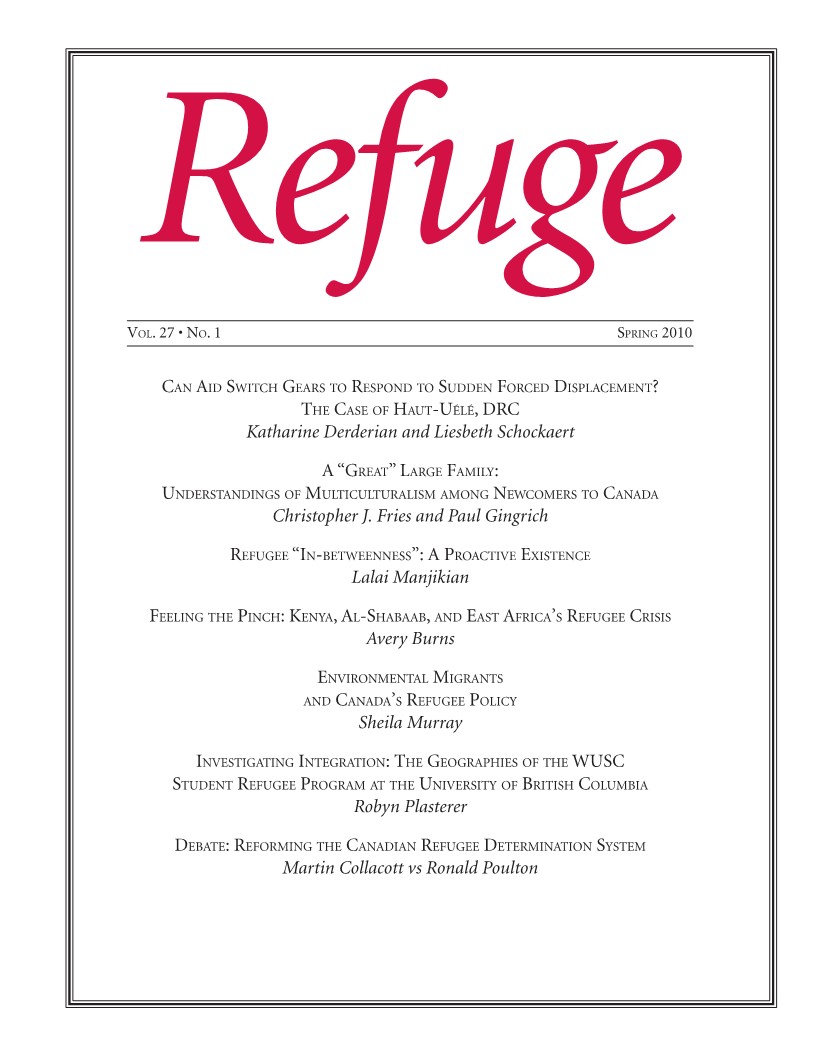Can Aid Switch Gears to Respond to Sudden Forced Displacement? The Case of Haut-Uélé, DRC
DOI:
https://doi.org/10.25071/1920-7336.34354Keywords:
Haut-Uele, Democratic Republic of Congo, DRC, humanitarian emergencies, forced displacement, aid, developmentAbstract
How does the aid system respond when insecurity and suddenforced displacement occur in what has long been considered a stable, development context? Can longer-term aid interventions adapt when challenged to “shift gears” to address acute needs resulting from forced displacement? Based on observations from Médecins Sans Frontières projects in Haut-Uélé in northeastern DRC in 2008–2009, this article examines assistance to displaced populations and the residents hosting them in LRA-affected areas—above all, the stakes and dilemmas involved in responding to such a sudden-onset emergency in what international donors and the national government considered an area in development.
Initially, a much-needed response to violence and displacement failed to materialize, with little permanent humanitarian presence on the ground, while development approaches failed to adapt and meet emergency needs. Short-term contingency support was provided through development NGOs, but with limited scope and maintaining cost-recovery schemes for health toward an impoverished population facing an increasingly precarious situation. A long-term development approach was simply unable to respond to the sudden population increase and a fragile health situation.
Metrics
Downloads
Published
How to Cite
Issue
Section
License
Copyright (c) 2011 Katharine Derderian, Liesbeth Schockaert

This work is licensed under a Creative Commons Attribution-NonCommercial 4.0 International License.
Refuge authors retain the copyright over their work, and license it to the general public under the Creative Commons Attribution-Non Commercial License International (CC BY-NC 4.0). This license allows for non-commercial use, reproduction and adaption of the material in any medium or format, with proper attribution. For general information on Creative Commons licences, visit the Creative Commons site. For the CC BY-NC 4.0 license, review the human readable summary.







